As an Amazon Associate I earn from qualifying purchases. Please see my Privacy Policy for more details.
Make healthy, hearty salads the star of your dinner table! You’ll learn how with this Ultimate Guide for Making Salads for Dinner that will leave you nourished, full, and satisfied.

There is definitely a time and place for small side salads, but salads consisting of vegetables only, while loaded with nutrients, tend to be low on calories and won’t keep you full and energized for very long.
Salads can be a complete meal by themselves, however, if well composed. Including fiber, protein, and healthy fats along with a variety of tastes and textures is the key for making main course salads for dinner that nourish and satisfy.
With this guide, you’ll learn how to make the most delicious hearty salads and banish boring salads forever!
Benefits of eating salads
Meet the daily requirements for fruits and vegetable servings. Salads are a great vessel for loading up on all sorts of fruits and vegetables. It’s easy to meet the daily recommended intake when you add a main course salad to your menu.
Fill up on fiber. Whole fruits and vegetables are full of fiber. Fiber is important for maintaining gut health, controlling blood sugar and cholesterol, and satiety. [source]
Hydrate. Hydration is important, but you don’t need to get it all from drinking water. The foods you eat also contribute to overall hydration levels. Some of the best foods to consume for hydration are cucumbers, celery, lettuce, spinach, carrots, melon, apples, and oranges – all ingredients that work well in salads.
Customize to your tastes. Since salads for dinner combine a variety of different foods, it’s easy to customize them to your individual tastes. My family (yes, even the kids!) love big salad bar dinners. I combine several types of leafy greens in a big bowl and then place all other prepped ingredients in individual bowls so everyone can top their salads how they prefer.
Use up what you have. Dinner salads are a great way to use up leftovers. Leftover roasted or steamed vegetables, leftover rice or pasta, and leftover baked tofu or tempeh are all terrific additions to main course salads.
Components of a main course salad
Greens
Aim for at least 2 cups of leafy greens per serving.
Typically, the darker the greens, the more nutrients they contain. They’re rich in vitamins A, C, E, and K. Some of them also have a significant amount of B vitamins. They also contain high amounts of calcium, iron, magnesium, potassium, fiber, and antioxidants. [source]
Leafy green varieties to try: kale, spinach, arugula, romaine, collard greens, mustard greens, swiss chard, dandelion greens, escarole, watercress, and more.
Even iceberg lettuce has a good amount of nutrients, has a great crunch, and provides plenty of hydration due to its high water content.
Pro tip: combine 2 or more varieties for taste and texture contrast and an increased amount of nutrients.
Buy fresh, if possible, and wash and dry the greens well. The prepackaged salad greens are fine in a pinch, but they tend not to last as long and don’t taste quite as fresh. I also find that the pre-chopped kale contains the tough, fibrous stems which aren’t very pleasing.
I have a few exceptions to the “don’t buy bagged salad” rule.
- I always pick up a bag of Cruciferous Crunch from Trader Joe’s when I’m there. It has shredded kale, green cabbage, red cabbage, broccoli and brussels sprouts. It’s actually a good value for all that it contains and I wouldn’t be able to use up the amount I would get if I bought them all whole before they went bad. Pro tip: This mixture is also great quickly sautéed with soy sauce and paired with noodles or rice and tofu for an easy stir fry dinner idea.
- A bag of coleslaw mix is also a great buy. It’s just shredded cabbage and carrots, but it lasts quite a while after opening because the vegetables are so hearty. Perfect for quickly tossing in a salad for some great crunch! It’s also great in my quick and easy Vegan Macaroni Salad!
Vegetables
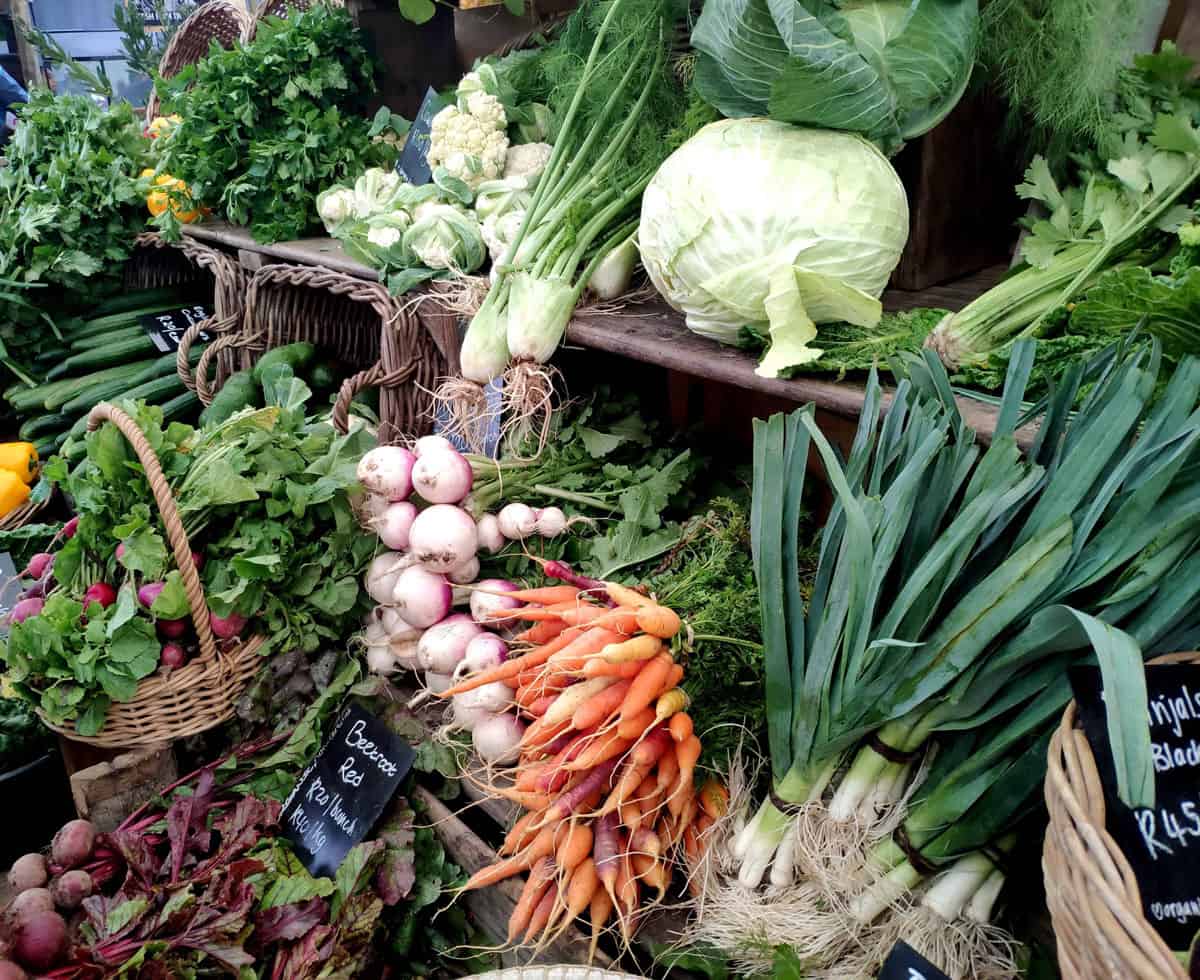
Aim for 1-1 ½ cup(s) per serving.
Use a mix of raw, steamed, roasted, and/or grilled vegetables for texture and temperature contrast.
Use a mix of diced, shredded, sliced, etc., again for texture contrast.
Fresh vegetables are best in salads! You’ll find plenty of options at your local grocery store or supermarket.
Pro tip: A trip to your local farmer’s market or a subscription to a delivery service like Imperfect foods or a local CSA (community supported agriculture) is great for finding new-to-you varieties.
Choose seasonal and local when possible for the freshest and most nutrient-dense vegetables.
Choose organic, if possible, when purchasing varieties from The Dirty Dozen to reduce exposure to toxic pesticides.
Vegetable varieties to try: Cucumbers, tomatoes, carrots, radishes, celery, bell peppers, beets, sweet potatoes, butternut squash, broccoli, cauliflower, cabbage, radicchio, green peas, green beans, sugar snap peas, green onions, zucchini, corn, mushrooms (technically, not a vegetable, but used like one) and more!
Protein

Aim for ¼-1/2 cup per serving.
When making salads for dinner it’s important to include protein. Healthy plant-based protein sources that are great in salads include black beans, chickpeas, lentils, tempeh, tofu, edamame, wild rice, or quinoa.
Canned beans and lentils are a pantry staple and are always on my plant-based diet grocery list. They’re inexpensive and convenient. Just be sure to drain and rinse them well before adding to your salad. If you want to cook them from scratch an Instant Pot can help to save you time.
While I usually make my baked tofu recipe, I do sometimes buy packages of baked tofu from the store for convenience. It’s ready-to-eat and can easily be thrown cold into my salads for dinner or quickly heated for a temperature contrast to the cool, crisp leafy greens. The packaged baked tofu does cost more, however, so it’s an occasional buy.
Remember: Nearly all foods contain some amount of protein, including leafy greens and vegetables! By eating a well-balanced, varied plant-based diet, you’ll get all the essential amino acids you need.
Healthy fats
Aim for 1-2 tablespoon(s).
Healthy fats will help your body to absorb the vitamins and antioxidants from the fruits and vegetables.
Good sources of healthy fats include: avocado, olives, raw nuts (almond, pecans, walnuts, etc.) and seeds (pumpkin seeds, hemp seeds, flax seeds, sunflower seeds, etc.).
Texture is so important for feeling satisfied when eating salads for dinner. Nuts and seeds offer a great crunch!
Keep in mind that, while nutritious, these foods are quite high in calories. Use them sparingly.
Garnishes
Aim for 1-2 tablespoons per serving.
These garnishes can really take your dinner salads from good to great! They pack so much flavor and added nutrients in just a small amount.
Try adding chopped fresh herbs (like parsley, cilantro, dill or basil), quick pickled red onions, sprinkle of nutritional yeast, or superfoods like sprouts, spirulina, or dulse flakes. Want to know more about superfoods? I talk about them in my most recent book, The Plant-Based Diet Cookbook For Dummies.
I also love the superfood powders from Your Super. These high quality powders are made from organic whole food plant-based ingredients that are naturally dried or freeze-dried immediately after harvesting to maintain the highest amount of vitamins and minerals. No additives, preservatives or sweeteners! The Super Green is my favorite for sprinkling onto salads. *Use code VEGGIEINSPIRED for 15% off your order!*
And don’t forget the salt and fresh cracked black pepper!
Extras
Still want more? Salads are perfect for using up leftovers you might have hanging out in your fridge. A few tablespoons of leftover grains, like rice, barley, couscous, or even pasta, can add a satisfying chewy bite.
Fresh or dried fruit can be a lovely sweet flavor contrast to all the savory ingredients. I particularly love adding grapes to salads, like in my Roasted Cauliflower Salad, Vegan Chickpea Salad, Vegan Quinoa Salad, and Raw Veggie Chopped Salad or strawberries like in my Summer Pasta Salad, chopped apples like in my Curried Tofu Salad, and oranges like in my Vegan Brussels Sprouts Salad.
A sprinkle of vegan parmesan cheese or vegan feta, either homemade or store-bought, drizzle of balsamic vinegar, or a squeeze of fresh lemon juice can add a great punch of flavor.
Dressing
Aim for about 2 tablespoons per serving.
Homemade salad dressing is generally healthier than store-bought and it’s so easy to make.
A few of our favorite homemade vegan salad dressings:
- Southwest Vegan Ranch Dressing
- Citrus Tahini Dressing
- Tahini Goddess Dressing
- Hemp Seed Dressing
- Lemon Vinaigrette Dressing
- Creamy Sesame Salad Dressing
- Vegan Green Goddess Dip (thin it out to make a dressing)
Sometimes I like to combine a dollop of sauce with a drizzle of dressing for a unique flavor profile. Some good combinations are bbq sauce and ranch dressing (I have a BBQ Ranch Dressing in my Meatless Monday Family Cookbook!), kale walnut pesto and dijon vinaigrette, or roasted red pepper hummus and tahini dressing.
Serving suggestions
Hearty salads for dinner are a complete meal on their own. However, smaller portions of them can be delicious paired with complementary items.
A slice of crusty bread, vegan jalapeño cornbread or vegan garlic bread would be a perfect accompaniment.
In the cooler months consider pairing your loaded dinner salad with one of these cozy vegan soup recipes. In the warmer months, try one of these lighter summer soup recipes.
A half sandwich can be a tasty match with your salad, as well. Some good choices are this Hummus Sandwich, Veggie Wrap, Vegan Tuna Salad, or Vegan Avocado Toast.
Meal prep
Many of the components of a dinner salad can be prepped in advance.
Wash and chop salad greens at the beginning of the week. Use a salad spinner to dry them well. Store them in a container or plastic zip-top bag with a paper towel to soak up any extra liquid – they’ll last longer this way.
Slice, dice, or roast vegetables in bulk. Store raw veggies separate from roasted.
Cook big batches of beans, lentils, or grains so you can grab a scoop at a moment’s notice. An Instant Pot is great for this! Store them in ½ cup servings to make it even easier to grab and add to your salads for dinner time.
Whip up a homemade salad dressing (or two!) and store it in a mason jar in the fridge.
Storage
Most components of the salad, stored separately, will last 3 to 4 days in the fridge.
Glass mason jars are perfect for storing dressings or sauces.
Glass storage containers in a variety of sizes are great for storing prepped veggies, grains, beans, and more!
I love the larger sizes of these produce saver containers for storing chopped leafy greens.
Helpful equipment
As much as we all know we should be eating more vegetables and salads, if it’s not quick and easy, we’re not likely to stick with it. Here is some of my favorite kitchen equipment and tools to make prep time and meal time easier.
- Salad spinner – Make quick work of washing and drying leafy greens. Bonus: kids love to operate this thing!
- Mesh strainers/colander – It’s helpful to have a variety of sizes for rinsing beans and lentils, draining canned beans, or rinsing berries. A larger colander is perfect for draining pasta.
- Cutting boards – At least one large cutting board is necessary. I like to have a couple others in a variety of sizes, too. Note: if you are a meat-eater, be sure to keep separate cutting boards for meat and plant-based items.
- Chef’s knife – A large chef’s knife can do just about anything in the kitchen. It’s my go-to for chopping, dicing, slicing, mincing, etc. There is an exception for tomatoes, however, in which case I prefer a sharp serrated knife.
- Can opener – I’m guessing you already have one of these, but if not, get one for opening canned beans or lentils.
- Vegetable peeler – for peeling carrots and sweet potatoes or for making long ribbons from carrots, zucchini, or summer squash.
- Food processor – This is by far my favorite kitchen tool. It can purée and chop with the regular blade, but they generally also come with other blade attachments that can slice, shred, and more!
- Blender – Preferably a high-speed blender, like a Vitamix or Blendtec. A high-speed blender can make quick work of puréeing sauces and dressings even those containing nuts, which are often used in plant-based recipes.
- Grater – A box grate is ideal because it can grate in coarse, medium or fine shreds and usually a slicer on the fourth side. The fine shred side is perfect for grating fresh ginger and garlic!
- Spiralizer – I admit this is not a gadget I use very often, but I do love it for making zucchini noodles or sweet potato noodles on occassion. The kids thing veggie spirals are fun, so if it gets anyone to eat more veggies, than it’s a good buy!
- Salad tongs – These salad “hands” are great for tossing all the ingredients together.
Pro tips and tricks
~ Include carbs, protein, and healthy fats to make salads for dinner that will both nourish and satisfy.
~ Texture is key! Combine cool, crisp greens with a variety of raw and cooked vegetables, crunch from nuts or seeds, and something soft and creamy, like avocado, cubes of roasted sweet potato, or vegan cheese. Simply cutting vegetables in different ways (diced, shredded, sliced, etc) can offer interesting texture contrast, too.
~ Include an ingredient from all 5 tastes – salty, sweet, sour, bitter, and savory (often referred to as umami).
~ We eat with our eyes first, so be sure your salad consists of many vibrant colors. This is a good way to ensure you’re consuming a wide variety of nutrients as well. Eat the rainbow!
~ Fresh is best! While frozen and canned vegetables are terrific in certain dishes, like soups, curry, and casseroles, they’re not the best choice for salads.
~ Don’t forget to season your salad! A sprinkle of sea salt, some freshly cracked black pepper, a tablespoon of freshly chopped herbs, and/or a squeeze of fresh lemon juice can go a long way in adding flavor and will reduce the amount of dressing needed.
~ Use a big bowl! There’s nothing worse than trying to mix a salad in a small bowl and having ingredients spilling out over the sides.
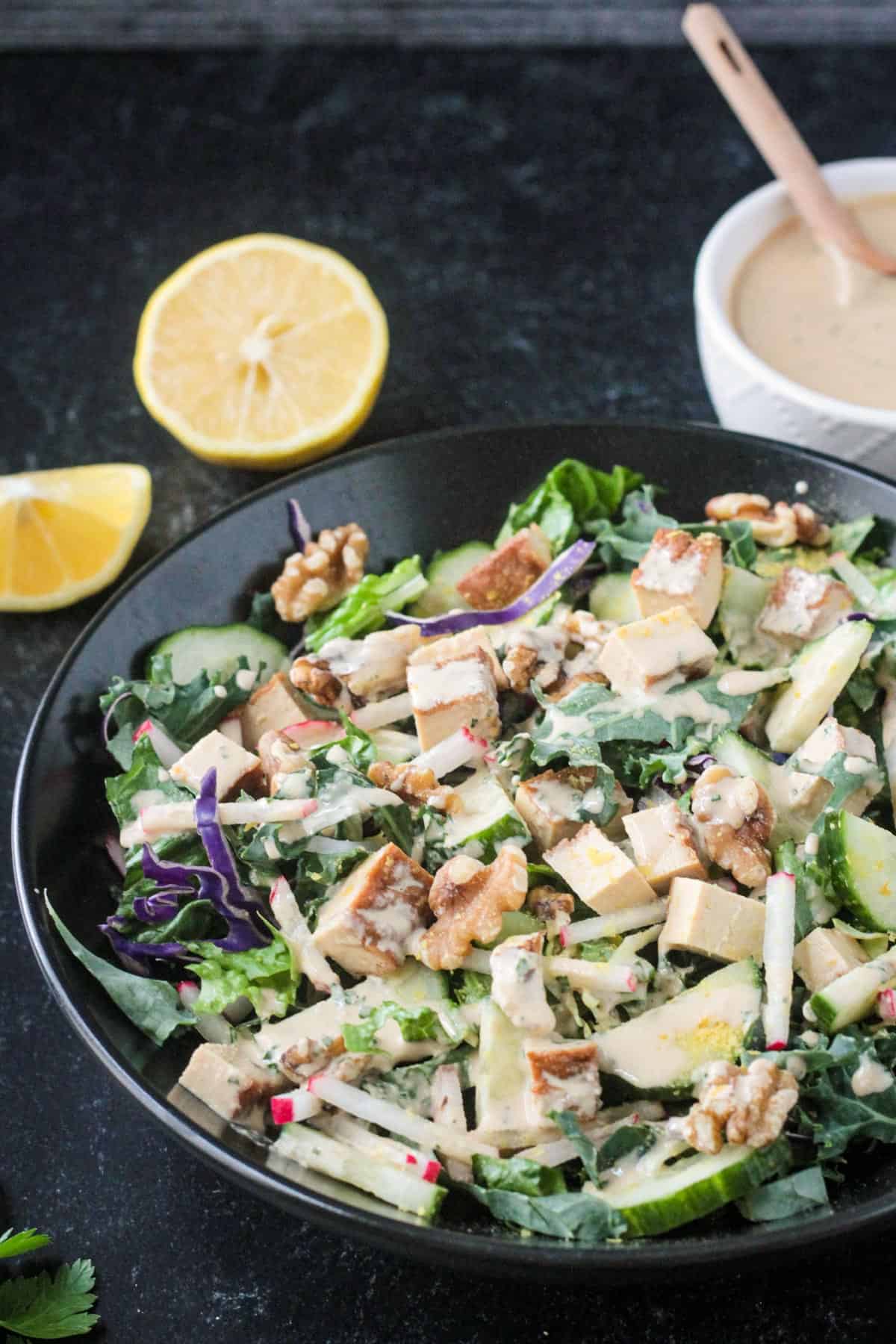
FAQs
Yes, a salad can be a complete meal! Be sure to include protein, fiber, and healthy fats along with a variety of vegetables.
A variety of texture, color, and taste is the key to making good salads for dinner.
Garnishes like fresh herbs, pickled red onions, a squeeze of lemon, or a drizzle of balsamic vinegar can go a long way in adding flavor to your salad. And don’t forget the freshly cracked black pepper!
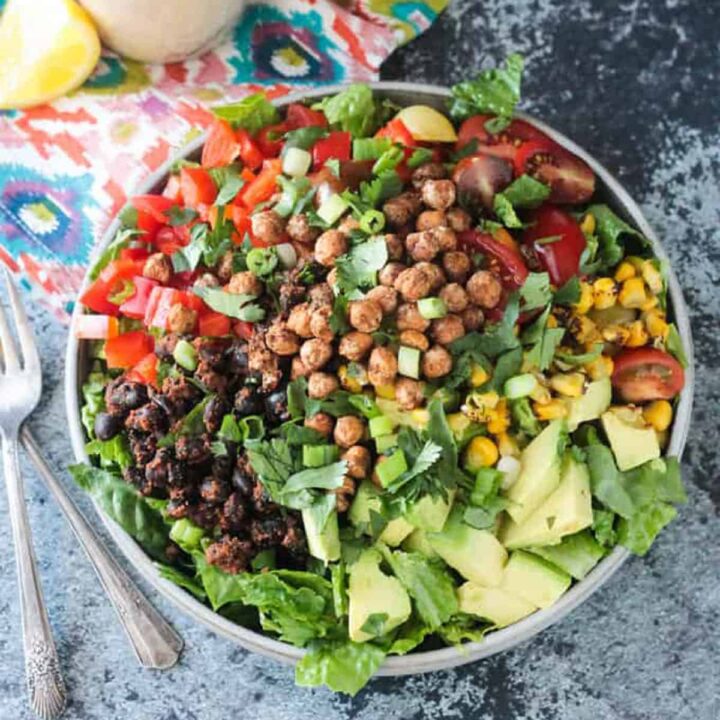
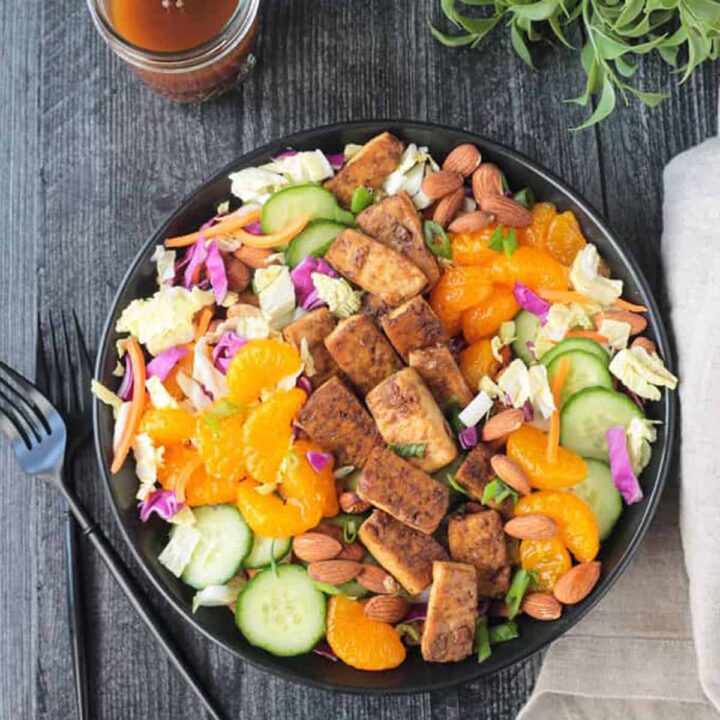
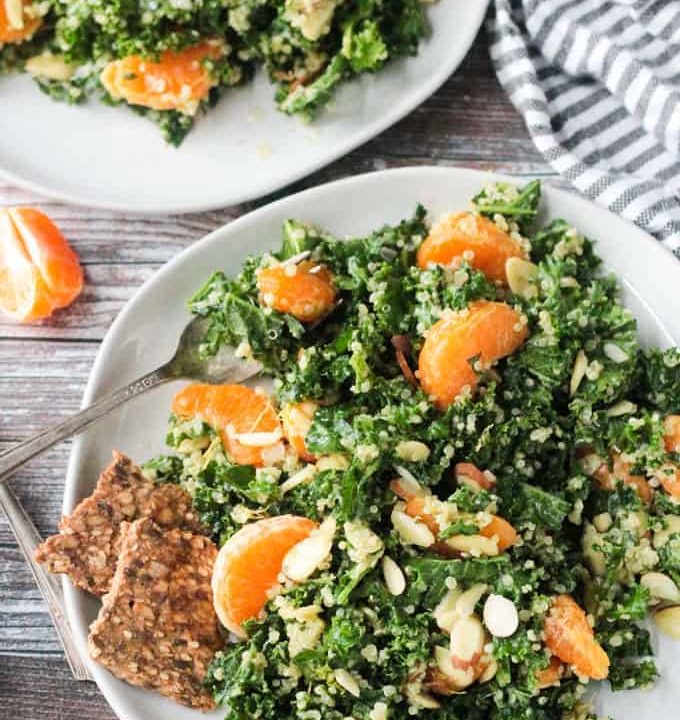


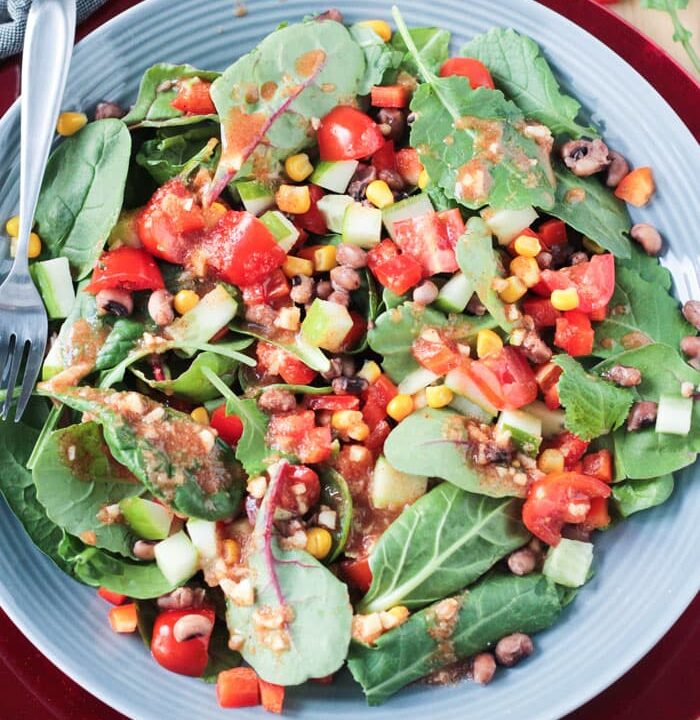




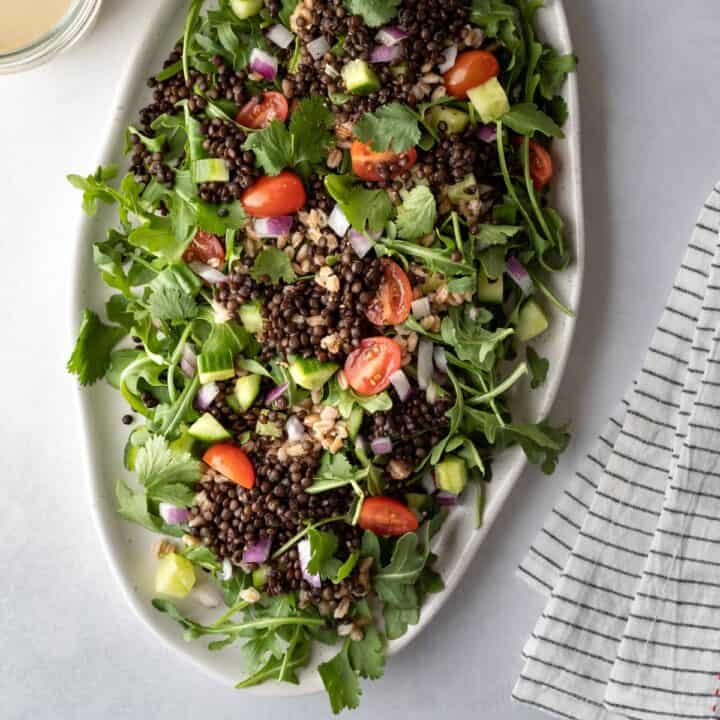
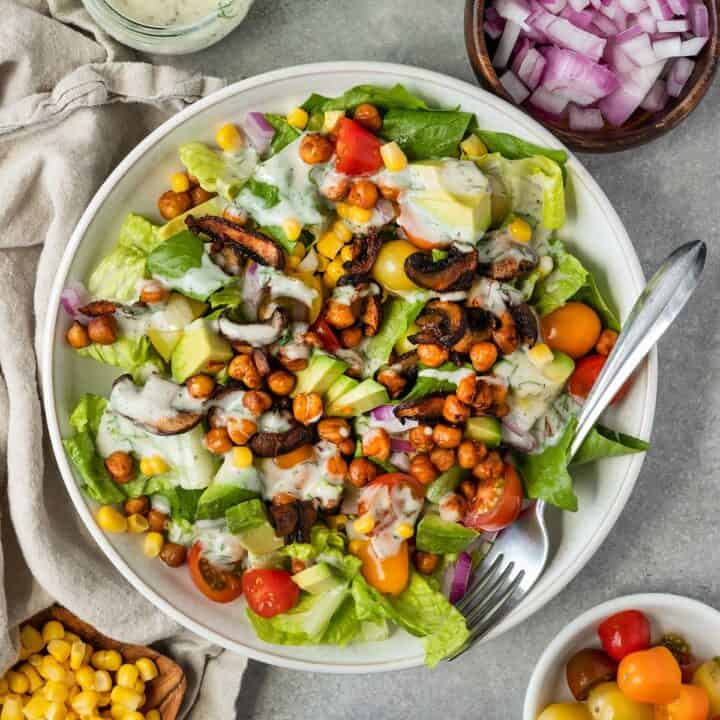



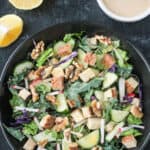
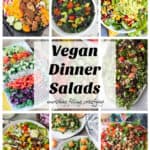
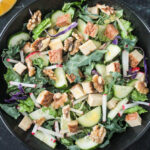
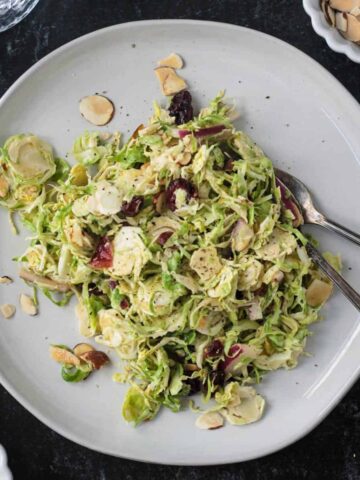

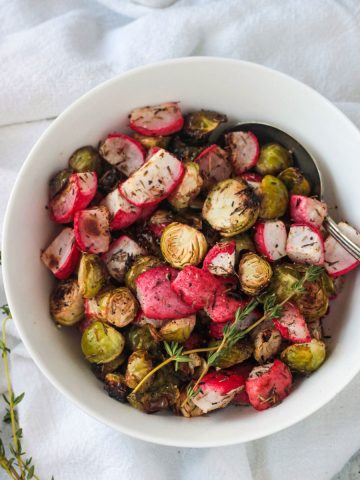

Dianne says
Thanks so much for including one of my recipes in this yummy line-up!
Jenn Sebestyen says
Of course! Always love your recipes, Dianne!